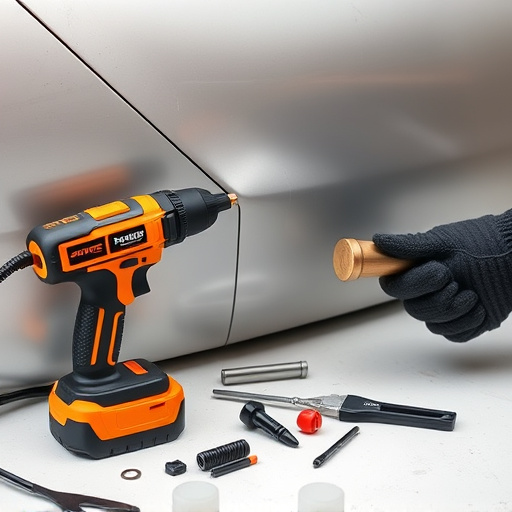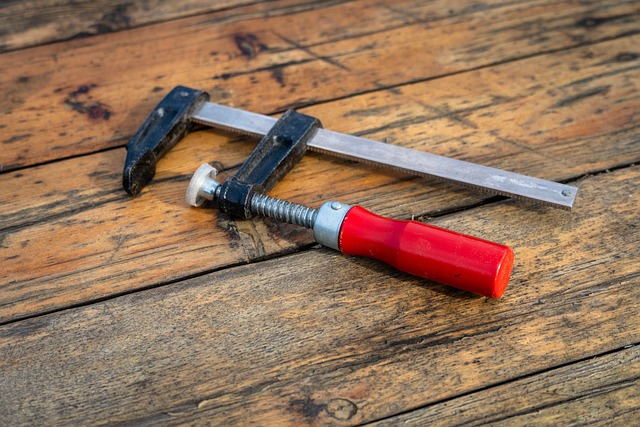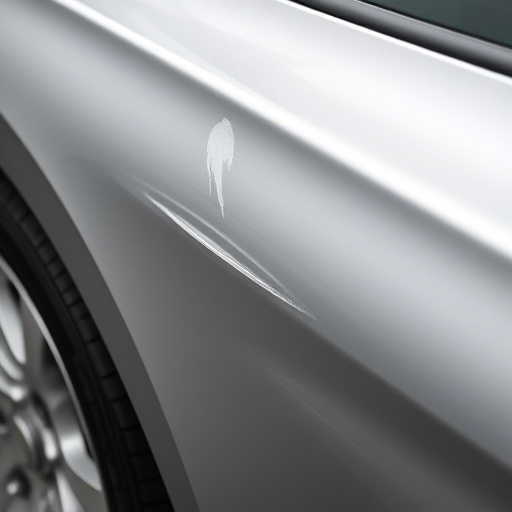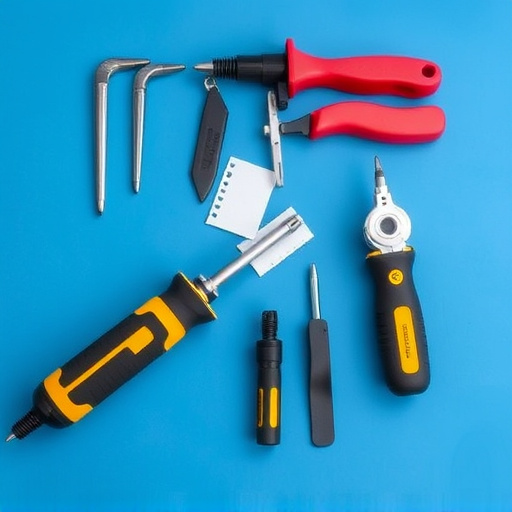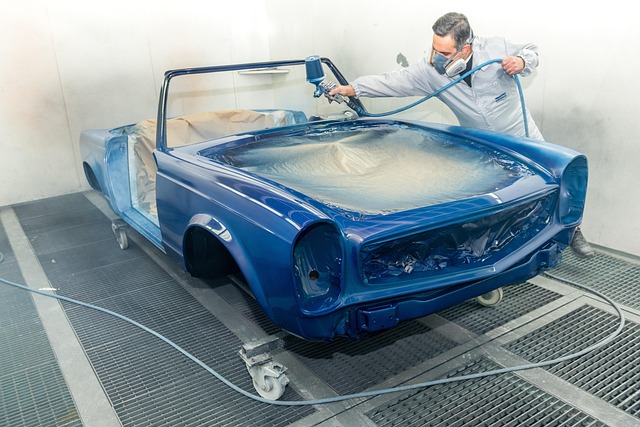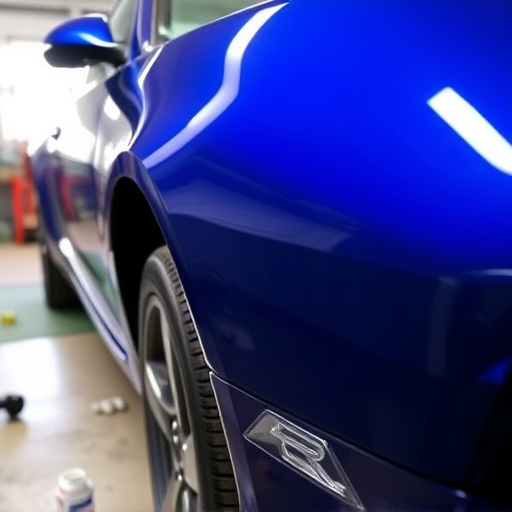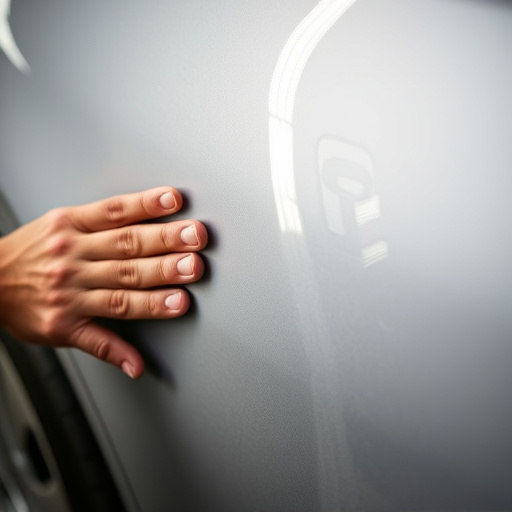Category: eco-friendly collision repair
Eco-Friendly Collision Repair: Revolutionizing the Auto Industry for a Sustainable Future
Introduction
In an era where environmental consciousness is at an all-time high, the automotive industry is undergoing a significant transformation. Eco-friendly collision repair is at the forefront of this revolution, aiming to minimize the ecological impact of vehicle accidents and repairs. This comprehensive guide delves into the world of sustainable collision repair practices, exploring their benefits, global implications, technological innovations, and challenges. By understanding these aspects, we can appreciate how eco-friendly collision repair is not just a trend but a necessary step towards a greener, more resilient future for transportation.
Understanding Eco-Friendly Collision Repair: Unveiling the Basics
Eco-friendly collision repair, also known as environmentally friendly or sustainable automotive restoration, is a specialized approach to repairing damaged vehicles while prioritizing ecological well-being. It involves a set of practices and technologies designed to minimize waste, reduce pollution, conserve resources, and promote recycling in the auto repair sector. The core components of this concept include:
- Waste Reduction: This involves minimizing debris generated during the repair process, encouraging reuse, and promoting recycling of materials.
- Eco-Friendly Materials: Utilizing alternative, non-toxic materials that are biodegradable or easily recyclable is a key principle.
- Energy Efficiency: Sustainable repair practices focus on energy conservation through efficient tools, heating, and cooling systems.
- Water Conservation: Implementing water-saving techniques in cleaning and painting processes is essential to protect this vital resource.
- Green Cleaning: Non-hazardous cleaning agents are preferred to ensure a safer environment for workers and the surrounding ecosystem.
- Recycling and Reuse: A significant emphasis is placed on recycling metal, plastic, and glass components, as well as reusing parts where possible.
Historically, the automotive repair industry has been associated with high environmental impact due to the use of toxic chemicals, excessive waste generation, and energy-intensive processes. Eco-friendly collision repair emerged as a response to these concerns, gaining momentum in the late 20th century with growing awareness of climate change and pollution. The movement has since evolved, driven by consumer demand, stricter environmental regulations, and technological advancements.
Global Impact and Trends: A Worldwide Effort
The concept of eco-friendly collision repair has transcended national borders, becoming a global initiative. Its impact is evident across various regions, each contributing to and adopting sustainable practices in unique ways:
| Region | Key Contributions | Trending Practices |
|---|---|---|
| North America | Early adoption of green cleaning technologies and water-based coatings. | Use of plant-based solvents, advanced rust prevention techniques. |
| Europe | Strict environmental regulations have led to widespread use of recycling and reuse methods. | Lightweight materials for panels, battery-powered tools for energy efficiency. |
| Asia Pacific | Rapid growth in electric vehicle (EV) adoption drives eco-friendly repair practices for EV components. | High-efficiency filters for paint booth air, digital water flow meters. |
| Latin America | Focus on local sourcing of sustainable materials and training programs for technicians. | Organic fiber glass, natural rubber, biodegradable plastics. |
| Middle East | Implementing desert-friendly techniques, such as reflective paints and efficient cooling systems. | Solar-powered workshops, water recycling systems. |
These regional variations showcase the dynamic nature of eco-friendly collision repair, constantly evolving to meet specific environmental challenges and cultural contexts.
Economic Considerations: A Sustainable Business Model
The economic landscape surrounding eco-friendly collision repair is multifaceted, impacting both businesses and consumers. Here’s an analysis of key economic aspects:
Market Dynamics
- Growing Demand: The global market for sustainable automotive services, including collision repair, is expanding rapidly. This growth is driven by increasing environmental awareness, stricter regulations, and consumer preferences for eco-conscious products and services.
- Competitive Advantage: Businesses adopting eco-friendly practices can differentiate themselves in a crowded market, attracting environmentally conscious customers and potentially commanding premium prices.
- Supply Chain Impact: The shift towards sustainability affects the entire automotive supply chain, from manufacturers producing eco-friendly materials to suppliers offering green cleaning solutions.
Investment Patterns
- Initial Costs: Implementing eco-friendly technologies and training can be capital-intensive for businesses, requiring significant upfront investments. However, these costs are offset by long-term savings on energy, waste management, and compliance with regulations.
- Government Incentives: Many countries offer incentives, grants, and tax breaks to encourage the adoption of sustainable practices in industries like automotive repair. These incentives play a crucial role in fostering economic growth in this sector.
- Private Sector Investment: Green technologies and eco-friendly materials are seeing increased private sector investment, driving innovation and market expansion.
Consumer Behavior
- Waste Reduction Appeal: Consumers increasingly prefer businesses that minimize waste and promote recycling, making eco-friendly collision repair more attractive.
- Price Sensitivity: While some sustainable practices may be priced higher initially, consumers are demonstrating a growing willingness to pay for products and services that align with their environmental values.
- Brand Loyalty: Companies committed to sustainability often build strong brand loyalty among environmentally conscious customers.
Technological Advancements: Driving the Green Revolution
Technological innovation plays a pivotal role in shaping the future of eco-friendly collision repair, offering both solutions and challenges. Here’s an overview:
- Digitalization and Automation: Advanced digital systems and automation can optimize repair processes, reducing human error and improving efficiency. This leads to less waste generation and energy consumption.
- 3D Printing: This technology enables the precise manufacturing of vehicle parts, minimizing material waste. It also offers customization options for unique repairs.
- Green Chemicals: Researchers are developing non-toxic, biodegradable alternatives to traditional automotive chemicals, reducing environmental pollution.
- Internet of Things (IoT) Sensors: IoT sensors can monitor and control temperature, humidity, and air quality in repair shops, optimizing conditions while minimizing energy use.
- Advanced Materials: Lightweight, sustainable materials like bio-composite fibers and recycled metals are transforming the auto industry, reducing weight and environmental impact.
Policy and Regulation: Shaping the Sustainable Path
Government policies and regulations play a crucial role in guiding the adoption of eco-friendly collision repair practices. Key frameworks include:
- Environmental Protection Acts: These laws often mandate waste management plans, emissions controls, and safe disposal of hazardous materials, all of which impact automotive repair operations.
- Recycling Standards: Governments set recycling targets for industries, encouraging the use of recycled materials in vehicle construction and repair.
- Emission Standards: Stricter regulations on vehicle emissions push manufacturers to design more fuel-efficient and eco-friendly cars, influencing collision repair methods.
- Incentivizing Green Practices: Many countries offer tax benefits, grants, or subsidies for businesses adopting sustainable technologies and practices.
- International Agreements: Global agreements like the Paris Climate Agreement influence national policies, driving action towards sustainable transportation systems.
Challenges and Criticisms: Overcoming Barriers
Despite its numerous benefits, eco-friendly collision repair faces several challenges and criticisms that require strategic solutions:
- Initial Cost Barrier: Implementing green technologies can be expensive, deterring smaller businesses from adopting sustainable practices. Financial incentives and access to capital are essential to overcome this hurdle.
- Training Needs: Technicians must adapt to new tools, materials, and processes, requiring comprehensive training programs to ensure quality repairs and worker safety.
- Supply Chain Disruptions: Sourcing eco-friendly materials can be challenging, especially for specialized or locally unavailable products. Supply chain management and collaboration with suppliers are key solutions.
- Consumer Misconceptions: Some consumers may perceive eco-friendly options as less effective or more expensive, requiring education campaigns to dispel these myths.
- Waste Management: Proper disposal of some materials still presents challenges, particularly for rare or toxic components, underscoring the need for robust recycling infrastructure.
Case Studies: Real-World Success Stories
Exploring successful implementations of eco-friendly collision repair offers valuable insights into its practical application and impact. Here are a couple of case studies:
Case Study 1: Green Repair Shop in Urban Canada
A small, family-owned repair shop in Toronto decided to embrace sustainability by transitioning to water-based paints and coatings, implementing energy-efficient LED lighting, and adopting recycling practices for metal and plastic. They invested in training their staff on eco-friendly techniques. As a result, the shop reduced its environmental impact, saved on utility bills, and gained a loyal customer base that values sustainability.
Case Study 2: Large-Scale Eco-Friendly Body Shop in Australia
One of Australia’s leading automotive repair chains, with over 50 locations, committed to becoming an industry leader in sustainable practices. They invested in advanced water recycling systems for cleaning processes, installed solar panels at many branches, and switched to electric polishing machines. This initiative resulted in significant cost savings, reduced their carbon footprint, and set a new standard for eco-conscious automotive repair in the country.
Future Prospects: Charting the Course Ahead
The future of eco-friendly collision repair is filled with promising possibilities, driven by technological advancements, shifting consumer preferences, and global sustainability goals. Here’s a glimpse into emerging trends and strategic considerations:
- Digital Twin Technology: Creating digital replicas of vehicles allows for precise repairs and virtual testing of new materials, reducing the need for physical prototypes.
- Circular Economy Model: Adopting this model focuses on recycling, reusing, and repurposing materials, minimizing waste generation and maximizing resource efficiency.
- Advanced Recycling Techniques: Continued development in recycling technologies will make it easier to process complex materials, ensuring a steady supply of eco-friendly components.
- Integration of AI and Machine Learning: These tools can optimize repair processes, predict maintenance needs, and enhance worker safety, contributing to overall sustainability.
- Consumer Education: Increased awareness campaigns will empower consumers to make informed choices, driving demand for eco-friendly services.
- International Collaboration: Sharing best practices and technologies globally will accelerate progress, ensuring a more unified approach to sustainable transportation.
Conclusion: A Sustainable Journey Forward
Eco-friendly collision repair represents a transformative shift in the automotive industry, moving towards a greener, more resilient future. By understanding its definition, global impact, economic considerations, technological advancements, policies, challenges, and success stories, we can appreciate the significance of this movement. As the world navigates an era of increasing environmental awareness, eco-friendly collision repair is not just an option but a necessity. It offers a sustainable path forward, ensuring that our transportation systems are friendly to both people and the planet.
FAQ Section: Answering Common Queries
Q: How does eco-friendly collision repair benefit the environment?
A: By minimizing waste, reducing pollution from toxic chemicals, conserving energy, and promoting recycling, it significantly reduces the ecological footprint of vehicle repairs and accidents.
Q: Are eco-friendly materials as durable as traditional ones?
A: Many modern eco-friendly materials are designed to meet or exceed industry standards for durability. Advances in technology have led to high-performance, sustainable alternatives.
Q: Can eco-friendly collision repair be more affordable for consumers?
A: While some green technologies may have higher upfront costs, long-term savings on energy and reduced environmental impact can make it more cost-effective over time. Plus, consumer demand is driving competition, potentially leading to lower prices.
Q: What role do government policies play in promoting sustainable repair practices?
A: Governments influence the industry through regulations, incentives, and standards that encourage the adoption of eco-friendly methods. These policies ensure accountability while fostering innovation.
Q: How can consumers contribute to the growth of eco-friendly collision repair?
A: By choosing environmentally conscious repair shops, asking about sustainable practices, and supporting businesses committed to green initiatives, consumers play a vital role in driving industry-wide change.
Traditional vs Eco-Friendly Collision Repair: Sustainable Choices Matter
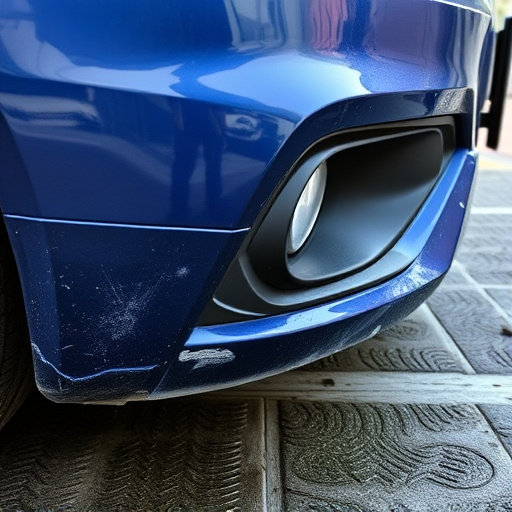
The automotive industry is shifting towards eco-friendly collision repair to reduce environmental im…….
Eco-Friendly Collision Repair: Minimize Energy Use with Best Practices

Adopting energy-efficient equipment and strategic workspace optimization are key to eco-friendly col…….
Eco-Friendly Collision Repair: Cleaner Air, Water Too

Eco-friendly collision repair techniques are revolutionizing the automotive industry by prioritizing…….
Eco-Friendly Collision Repair: Boost Profits, Win Customers

Eco-friendly collision repair cuts costs, enhances profitability, attracts environmentally conscious…….
Real-Time Monitoring: Revolutionizing Eco-Friendly Collision Repair
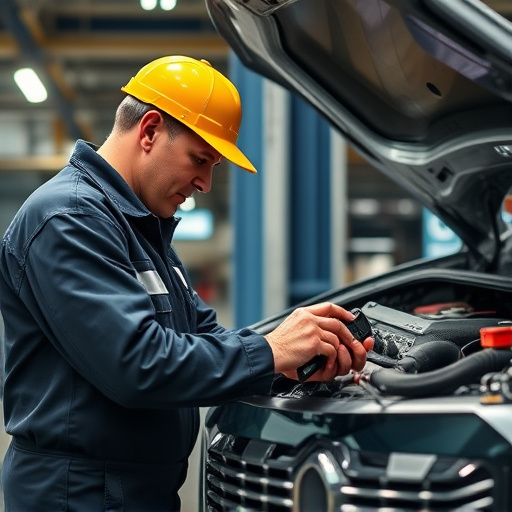
Real-time monitoring technologies revolutionize eco-friendly collision repair by tracking emissions,…….
Eco-Friendly Collision Repair: Longevity’s Secret Weapon
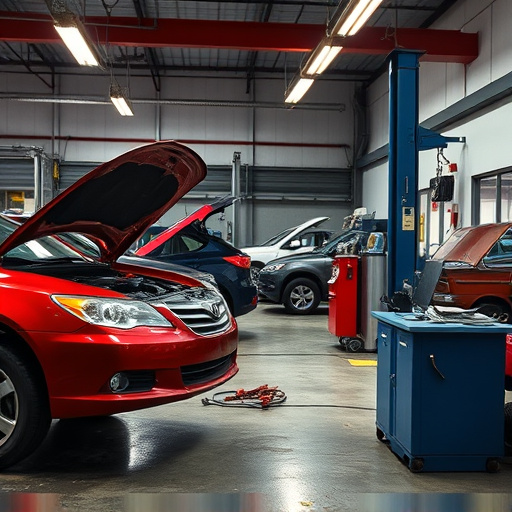
Sustainable materials and eco-conscious practices in eco-friendly collision repair revolutionize the…….
Driving Green: Eco-Friendly Collision Repair’s Innovative Future
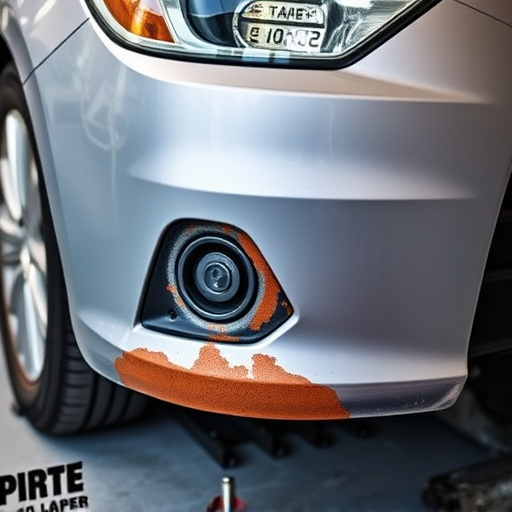
The automotive industry is transitioning to eco-friendly collision repair due to consumer demand and…….
Verify Eco-Friendly Collision Repair Commitment: Principles to Process
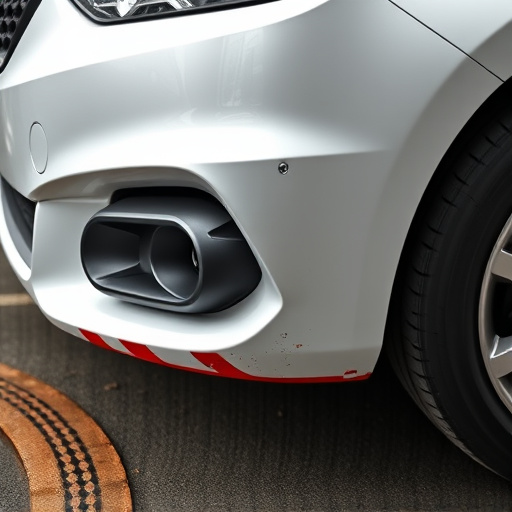
Eco-friendly collision repair is a growing trend in the automotive industry, focusing on sustainable…….
Sustainable Auto Repair: Eco-Friendly Practices for Waste Reduction
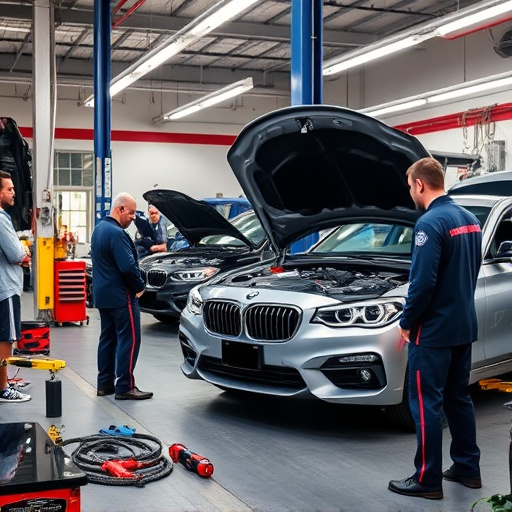
Eco-friendly collision repair revolutionizes auto restoration by prioritizing sustainability and min…….
